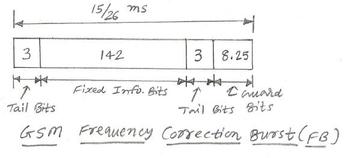5G NR GSCN: Global Synchronization Channel Number Explained
Learn about the 5G NR GSCN (Global Synchronization Channel Number), its parameters, and its role in identifying the center frequency for SS/PBCH blocks.
Showing 19 posts (Page 1 of 1)
Advertisement
Learn about the 5G NR GSCN (Global Synchronization Channel Number), its parameters, and its role in identifying the center frequency for SS/PBCH blocks.
Explore common 5G NR physical layer test failures, their root causes like interference and weak signals, and practical solutions for optimization.

Explore the 5G NR SSB, covering its function, mapping, and physical layer processing. Learn about SS, PBCH channels, and the synchronization process.

Learn about differential encoders and decoders used in digital communication systems for bit synchronization and clock recovery, even with signal corruption.

Learn about the different types of GSM bursts (Normal, Frequency Correction, Synchronization, Access) and their roles in ensuring proper communication between mobile and base stations.

The GSM Frequency Correction Channel (FCCH) is a downlink channel used for synchronization between the BTS and MS by transmitting a continuous wave signal.

Learn about the GSM Synchronization Channel (SCH), its role in time synchronization, and the information it carries, including the frame number and BSIC.

Learn the LTE cell search procedure used by User Equipment (UE) to synchronize with an LTE cell and detect its Physical Layer Cell ID (PCI).

Understand LTE NB-IoT preamble and reference signals including NPSS, NSSS, NRS, and DMRS. Learn their functions, locations within the NB-IoT frame, and differences from LTE PSS.

Explore the primary (P-SS) and secondary (S-SS) synchronization signals in LTE, their functions, sequences, and role in cell search and synchronization.

MATLAB code for frequency offset estimation and correction in OFDM receivers, crucial for wireless technologies like WLAN and WiMAX.
Explore the PDH frame structure for 2Mbps, 8Mbps, 34Mbps, and 140Mbps, covering frame alignment signals (FAS) and key parameters like frame length and rate.

Explore 5 advantages and disadvantages of R8ZS scrambling, including improved synchronization and error detection, alongside limitations like sensitivity to single-bit errors.

Explore the benefits and drawbacks of using scrambling techniques in digital data communication. Understand how it improves synchronization and the issues like error multiplication.
Explore the pros and cons of time hopping in wireless communication, including its resistance to interference, energy efficiency, and challenges with range and synchronization.

Explore time offset estimation for OFDM systems using MATLAB, crucial for synchronizing wireless and wireline communication. Learn how preamble correlation helps correct offsets.

Explore the critical role of timing and synchronization in femtocell networks, including techniques and challenges to ensure optimal performance and data integrity.
Learn the WCDMA cell search procedure used by User Equipment (UE) to synchronize and identify cells in a WCDMA network, including SCH analysis and scrambling code identification.
Learn about the WCDMA Synchronization Channel (SCH), its components (P-SCH and S-SCH), and its role in initial synchronization and cell search in UMTS networks.
Advertisement